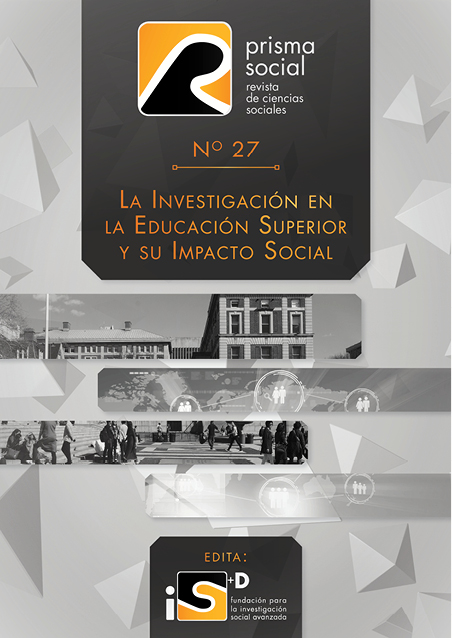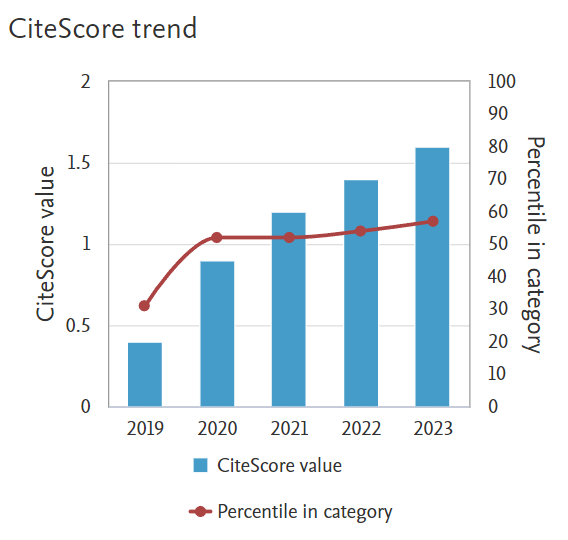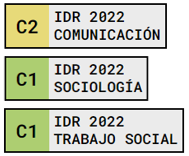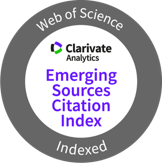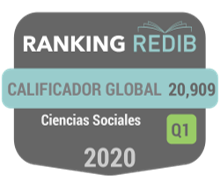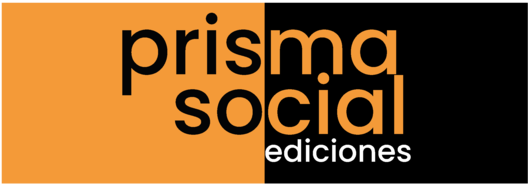Uso de una app móvil para evaluar la calidad de la enseñanza superior
Estudio de neuromarketing
Resumen
Las universidades del Espacio Europeo de Educación Superior -EEES- requieren de procedimientos para evaluar la calidad de sus titulaciones. En este sentido, se ha debatido mucho sobre los métodos más adecuados para medir de la satisfacción del alumnado, así como sobre la utilidad real de esta variable. Ante la cada vez mayor demanda de aplicaciones móviles para el aprendizaje -el llamado m-learning-, se puso a prueba la utilización de una app para evaluar la calidad docente, empleándose métodos neurocientíficos para averiguar las emociones experimentadas por 22 estudiantes del Grado en Publicidad y Relaciones Públicas de la Universidad Complutense. Así, se emplearon técnicas como el registro del recorrido de su mirada (eye tracking), de las expresiones faciales y de la respuesta dermoeléctrica de la piel. A continuación, se distribuyó un cuestionario para la valoración general de la app, y para su triangulación con las técnicas de neuromarketing. Los resultados reflejan una gran aceptación de la aplicación. Al serles mostradas capturas, el alumnado prestó atención a las áreas más importantes, con independencia de su género o del curso en el que cada participante se encontrara. Además, concedieron puntuaciones altas en el cuestionario, evidenciando su inclinación favorable a este tipo de herramientas.
Descargas
Citas
Adhami, M. (2013). Using neuromarketing to discover how we really feel about apps. International Journal of Mobile Marketing, 8(1), pp. 95-103. Recuperado de https://www.warc.com/content/article/ijmm/using_neuromarketing_to_discover_how_we_really_feel_about_apps/100341
Bell, L., Vogt, J., Willemse, C., Routledge, T., Butler, L. T. & Sakaki, M. (2018). Beyond self-report: A review of physiological and neuroscientific methods to investigate consumer behavior. Frontiers in Psychology, 9, pp. 1-16. doi: 10.3389/fpsyg.2018.01655
Bomhold, C. R. (2013). Educational use of smart phone technology: A survey of mobile phone application use by undergraduate university students. Program: Electronic Library and Information Systems, 47(4), pp. 424–436. doi: 10.1108/PROG-01-2013-0003
Busemeyer, J. R. & Rapoport, A. (1988). Psychological models of deferred decision making. Journal of Mathematical Psychology, 32(2), pp. 91-134. doi: 10.1016/0022-2496(88)90042-9
Cartocci, G., Cherubino, P., Rossi, D., Modica, E., Maglione, A. G., Di Flumeri, G & Babiloni, F. (2016). Gender and age related effects while watching TV advertisements: An EEG study. Computational Intelligence and Neuroscience, 2016, pp. 1-10. doi: 10.1155/2016/3795325
Clayson, D. E. (2009). Student evaluations of teaching: Are they related to what students learn? A meta-analysis and review of the literature. Journal of Marketing Education, 31(1), pp. 16-30. doi: 10.1177/0273475308324086
Cohen, M. X. (2017). Where does EEG come from and what does it mean? Trends in Neuroscience, 40(4), pp. 208-218. doi: 10.1016/j.tins.2017.02.004
Comisión Europea/EACEA/Eurydice (2018). The European Higher Education Area in 2018: Bologna process implementation report. Luxemburgo: Oficina de Publicaciones de la Unión Europea.
Couwenberg, L. E., Boksem, M. A. S., Dietvorst, R. C., Worm, L., Verbeke, W. J. M. I. & Smidts, A. (2017). Neural responses to functional and experiential ad appeals: Explaining ad effectiveness. International Journal of Research in Marketing, 34(2), pp. 355-366. doi: 10.1016/j.ijresmar.2016.10.005
Crompton, H. (2013). A historical overview of m-learning: Toward learner-centered education. En Z. L. Berge, ZL y L. Y. Muilenburg (Eds.), Handbook of Mobile Learning (pp. 3-14). Nueva York: Routledge.
Cuesta, U., Martínez-Martínez, L. & Cuesta, V. (2017). Neuromarketing olfativo: Análisis del electroencefalograma y las respuestas psicofisiológicas provocadas por diferentes olores. Madrid: Tecnos.
Cuesta, U., Martínez-Martínez, L. & Niño, J. I. (2018). A case-study in neuromarketing: Analysis of the influence of music on advertising effectiveness through eye-tracking, facial emotion and GSR. European Journal of Social Science Education and Research, 5(2), 84-92. doi: 10.2478/ejser-2018-0035
D’Apollonia, S. & Abrami, P. C. (1997). Navigating student ratings of instruction. The American Psychologist, 52(11), pp. 1198–1208. doi: 10.1037/0003-066X.52.11.1198
Fang, J., Zhao, Z., Wen, Ch. & Wang, R. (2017). Design and performance attributes driving mobile travel application engagement. International Journal of Information Management, 37(4), pp. 269-283. doi: 10.1016/j.ijinfomgt.2017.03.003
Fueyo, A. (2004). Evaluación de titulaciones, centros y profesorado en el proceso de convergencia europea: ¿De qué calidad y de qué evaluación hablamos? Revista Interuniversitaria de Formación de Profesorado, 18(3), pp. 207-219. Recuperado de https://www.aufop.com/aufop/uploaded_files/articulos/1212408107.pdf
Fugate, D. L. (2015). Neuromarketing: A layman's look at neuroscience and its potential application to marketing practice. Journal of Consumer Marketing, 24(7), pp. 385-394. doi: 10.1108/07363760710834807
García-Berro, E., Dapia, F., Amblás, G., Bugeda, G. & Roca, S. (2009). Estrategias e indicadores para la evaluación de la docencia en el marco del EEES. Revista de Investigación en Educación, 6(1), pp. 142-152. Recuperado de https://upcommons.upc.edu/bitstream/handle/2117/28115/55.pdf?sequence=1&isAllowed=y
Gaye, F. H. (2015). Neuroscience: The study of the nervous system and its functions. Daedalus, 144(1), pp. 5-9. Recuperado de https://www.amacad.org/sites/default/files/daedalus/downloads/15_Winter_Daedalus.pdf
Glover, G. H. (2011). Overview of functional magnetic resonance imaging. Neurosurgery Clinics of North America, 22(2), pp. 133-139. doi: 10.1016/j.nec.2010.11.001
Goodrich, K. (2014). The gender gap: Brain-processing differences between the sexes shape attitudes about online advertising. Journal of Advertising Research, 1(2014), pp. 32-43. doi: 10.2501/JAR-54-1-032-043
Harley, J. M. (2016). Measuring emotions: A survey of cutting edge methodologies used in computer-based learning environment research. En S. Y. Tettegah y M. Gartmeier (Eds.), Emotions, Technology, Design, and Learning (pp. 89-114). Londres y San Diego, California: Academic Press.
Hashemi, M., Azizinezhad, M., Najafi, V. & Nesari, A. J. (2011). What is mobile learning? Challenges and capabilities. Procedia: Social and Behavioral Sciences, 30(2011), pp. 2477-2481. doi: 10.1016/j.sbspro.2011.10.483
Jaén, A. & Sirignano, F. M. (2016). El aprendizaje cooperativo como estrategia didáctica para la adquisición de competencias en el EEES. Propuesta y reflexión sobre una experiencia. Hekademos: Revista Educativa Digital, 19(año IX), pp. 7-19. Recuperado de http://www.hekademos.com/hekademos/media/articulos/19/01.pdf
Javor, A., Koller, M., Lee, N., Chamberlain, L. & Ransmayr, G. (2013). Neuromarketing and consumer neuroscience: contributions to neurology. BMC Neurology, 13(1), pp. 1-12. doi: 10.1186/1471-2377-13-13
Jenaro, C., Castaño, R., Martín, M. E. & Flores, N. (2018). Rendimiento académico en educación superior y su asociación con la participación activa en la plataforma Moodle. Cultura y Educación, 34(2018), pp. 177-198. doi: 10.15581/004.34.177-198
Lee, N., Broderick, A. J. & Chamberlain, L. (2007). What is “neuromarketing”? A discussion and agenda for future research. International Journal of Psychophysiology, 63(2), pp. 199-204. doi: 10.1016/j.ijpsycho.2006.03.007
Lee, N., Chamberlain, L. & Brandes, L. (2018). Welcome to the jungle! The neuromarketing literatura through the eyes of a newcomer. European Journal of Marketing, 52(1-2), pp. 4-38. doi: 10.1108/EJM-02-2017-0122
Leite, F. P. & Ratcliff, R. (2010). Modeling reaction time and accuracy of multiple-alternative decisions. Attention, Perception, & Psychophysics, 72(1), pp. 246-273. doi: 10.3758/APP.72.1.246
Marsh, H. W. (2007). Students’ evaluations of university teaching: A multidimensional perspective. En R. P. Perry y J. C. Smart (Eds.), The scholarship of teaching and learning in Higher Education: An evidence based perspective (pp. 319–384). Nueva York: Springer.
Muñoz-Leiva, F., Hernández-Méndez, J. & Gómez-Carmona, D. (2019). Measuring advertising effectiveness in Travel 2.0 websites through eye-tracking technology. Physiology & Behavior, 200, pp. 83-95. doi: 10.1016/j.physbeh.2018.03.002
Palés-Argullós, J., Nolla-Domenjó, M., Oriol-Bosch, A. & Gual, A. (2010). Proceso de Bolonia (I): Educación orientada a competencias. Educación Médica, 13(3), pp. 1575-1813. doi: 10.33588/fem.133.564
Penny, A. R. & Coe, R. (2004). Effectiveness of consultation on student ratings feedback: A meta-analysis. Review of Educational Research, 74(2), 215-253. doi: 10.3102/00346543074002215
Plassmann, H., Ramsøy, T. Z. & Milosavljevic, M. (2012). Branding the brain: A critical review and outlook. Brand Insights from Psychological and Neurophysiological Perspectives, 22(1), pp. 18-36. doi: 10.1016/j.jcps.2011.11.010
Plassmann, H., Venkatraman, V., Huettel, S. & Yoon C. (2015). Consumer Neuroscience: Applications, Challenges, and Possible Solutions. Journal of Marketing Research, 52(4), pp. 427-435. doi: 10.1509/jmr.14.0048
Pozo, C., Bretones, B., Martos, M. J. & Alonso, E. (2011). Evaluación de la actividad docente en el Espacio Europeo de Educación Superior: un estudio comparativo de indicadores de calidad en universidades europeas. Revista Española de Pedagogía, 248(69), pp. 145-163. Recuperado de https://revistadepedagogia.org/wp-content/uploads/2011/01/248-008.pdf
Rampl, L. V., Opitz, C., Welpe, I. M. & Kenning, P. (2016). The role of emotions in decision-making on employer brands: Insights from functional magnetic resonance imaging (fMRI). Marketing Letters, 27(2), pp. 361-374. doi: 10.1007/s11002-014-9335-9
Rebollo, M. Á., García, R., Barragán, R., Buzón, O. & Ruiz, E. (2012). Tecnologías para la coeducación y la igualdad: Valoración del profesorado de una herramienta web. Educación XXI, 15(1), pp. 87-111. doi: 10.5944/educxx1.15.1.151
Reisenzein, R., Studtmann, M. & Horstmann, G. (2013). Coherence between emotion and facial expression: Evidence from laboratory experiments. Emotion Review, 5(1), pp. 16-23. doi: 10.1177/1754073912457228
Sánchez-Elvira, A., López-González, M. A. & Fernández-Sánchez, M. V. (2010). Análisis de las competencias genéricas en los nuevos títulos de grado del EEES en las universidades españolas. Red U - Revista de Docencia Universitaria, 8(1), pp. 35-73. doi: 10.4995/redu.2010.6217
Shimojo, S., Simion, C., Shimojo, E. & Scheier, C. (2003). Gaze bias both reflects and influences preference. Nature neuroscience, 6(12), pp. 1317-1322. doi: 10.1038/nn1150
Simion, C. & Shimojo, S. (2007). Interrupting the cascade: Orienting contributes to decision making even in the absence of visual stimulation. Perception & Psychophysics, 69(4), pp. 591-595. doi: 10.3758/bf03193916
Spooren, P., Brockx, B. & Mortelmans, D. (2013). On the validity of student evaluation of teaching: The state of the art. Review of Educational Research, 83(4), pp. 598-642. doi: 10.3102/0034654313496870
Stapenhurst, T. (2009). The benchmarking book: A how-to-guide to best practice for managers and practitioners. Oxford: Butterworth-Heinemann.
Vázquez-Cano, E. (2014). Mobile distance learning with smartphones and apps in Higher Education. Educational Sciences: Theory & Practice, 14(4), pp. 1505-1520. doi: 10.12738/estp.2014.4.2012
Vila-López, N. & Küster-Boluda, I. (2019). Consumers’ physiological and verbal responses towards product packages: Could these responses anticipate product choices? Physiology & Behavior, 200, pp. 166-173. doi: 10.1016/j.physbeh.2018.03.003
Wai, I. S. H., Ng, S. S. Y., Chiu, D. K. W., Ho, K. K. W. & Lo, P. (2018). Exploring undergraduate students’ usage pattern of mobile apps for education. Journal of Librarianship and Information Science, 50(1), pp. 34-47. doi: 10.1177/0961000616662699
Wright, S. L. & Jenkins-Guarnieri, S. L. (2012). Student evaluations of teaching: combining the meta-analyses and demonstrating further evidence for effective use. Assessment & Evaluation in Higher Education, 37(6), pp. 683-699. doi: 10.1080/02602938.2011.563279
Yániz, C. (2006). Planificar la enseñanza universitaria para el desarrollo de competencias. Educatio Siglo XXI: Revista de la Facultad de Educación, 24(1), pp. 17-34. Recuperado de https://revistas.um.es/educatio/article/view/151/134
Descargas
Publicado
Cómo citar
Número
Sección
Licencia
Los autores/as que publiquen en esta revista aceptan las siguientes condiciones:
- Los autores/as conservan los derechos de autor.
- Los autores/as ceden a la revista el derecho de la primera publicación. La revista también posee los derechos de edición.
- Todos los contenidos publicados se regulan mediante una Licencia Atribución/Reconocimiento-SinDerivados 4.0 Internacional. Acceda a la versión informativa y texto legal de la licencia. En virtud de ello, se permite a terceros utilizar lo publicado siempre que mencionen la autoría del trabajo y a la primera publicación en esta revista. Si transforma el material, no podrá distribuir el trabajo modificado.
- Los autores/as pueden realizar otros acuerdos contractuales independientes y adicionales para la distribución no exclusiva de la versión del artículo publicado en esta revista (p. ej., incluirlo en un repositorio institucional o publicarlo en un libro) siempre que indiquen claramente que el trabajo se publicó por primera vez en esta revista.
- Se permite y recomienda a los autores/as a publicar su trabajo en Internet (por ejemplo en páginas institucionales o personales), una vez publicado en la revista y citando a la misma ya que puede conducir a intercambios productivos y a una mayor y más rápida difusión del trabajo publicado (vea The Effect of Open Access).

